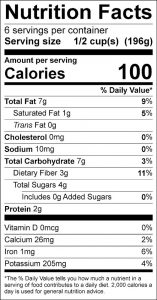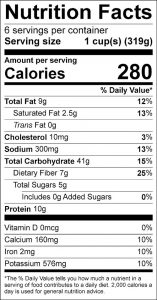Bulletin #4181, Vegetables and Fruits for Health: Bell Peppers

Developed by Extension Nutrition Specialist Nellie Hedstrom, University of Maine Cooperative Extension.
For information about UMaine Extension programs and resources, visit extension.umaine.edu.
Find more of our publications and books at extension.umaine.edu/publications/.
Bell peppers are available in many colors–green, red, yellow, and even orange. The color depends on the variety and the stage of ripeness. Most are sold as a mature bell pepper-green, fully developed but not ripe. Ripened on the vine, they turn redder and sweeter and have the highest amount of vitamins A and C. Maine-grown bell peppers are available from August to October.
Nutrition Information
Bell peppers are an excellent source of vitamins A and C. One raw pepper provides more vitamin C than one cup of orange juice. Because cooking can destroy some vitamin C, you will get the most benefit from peppers if you eat them raw.
Selection
Choose peppers that have good color and a glossy surface. Peppers should be firm and feel heavy for their size.
Storage
Whole, fresh, unwashed green peppers will keep in the refrigerator for three to four days. Since red peppers are riper than green ones, they will spoil faster. Use red peppers within one to two days.
Preparation
Raw:
Rinse peppers in cold water and then clean them (remove stems, seeds and the white membrane). For a tasty low-calorie snack, cut into rings or strips and eat them plain or with a low-fat dip. Raw peppers are excellent in salads.
Bake:
Clean peppers and cut into strips or chunks. Rub them with a small amount of oil and bake them at 400 to 425 degrees F until tender. Baked peppers are wonderful served as a side dish.
Steam:
Whole—This method is used with whole peppers before stuffing and baking them. Choose peppers that have an even end and will stand up without tipping over. Cut the tops off and remove the seeds and membrane. Place peppers upright in a steamer (see Pieces below). Steam for three to five minutes. Drain well and pat dry before stuffing and baking. (See recipe below.)
Pieces—Bring one inch of water to boil in the bottom of a pan. Place a colander or a collapsible steaming basket in the pan. Then put the vegetables in the colander or steamer and cover it tightly. Reduce heat to medium-low, but make sure it is high enough to keep the water bubbling.
Microwave:
To cook peppers completely, microwave them for four to six minutes on high power to the crisp-tender stage. For stuffed peppers, cook empty, cleaned, whole shells for two minutes. Remove the shells and fill them with a cooked stuffing. Cook seven to eight minutes longer or until the stuffing is heated.
Peppers and Zucchini
A very colorful dish, this recipe is very low in sodium and is an excellent source of vitamin C.
Serves: 6 (1/2-cup servings)
4 bell peppers (green, yellow, orange and/or red)
4 baby zucchini
3 tablespoons olive oil
1 teaspoon minced garlic
black pepper to taste
Clean the peppers and cut into 1-inch pieces. Quarter zucchini lengthwise and cut into 1-inch pieces. Heat the oil and sauté zucchini for 4-5 minutes, until lightly browned and barely softened. Stir in the garlic, cook 30 seconds, then add the peppers. Season with pepper to taste. Serve hot.
Stuffed Green Peppers
This low-fat recipe is an excellent source of vitamin C, and is rich in vitamin A, iron and calcium.
Serves: 6 (1-cup servings)
6 medium green peppers
1/2 cup chopped onion
1/2 cup chopped celery
1 clove garlic
2 tablespoons oil
1 16-ounce can kidney beans
2 cups cooked rice, brown or white
1 tablespoon parsley (optional)
1/4 teaspoon black pepper
1/2 cup grated cheddar cheese
Remove top and seeds from green peppers. Steam peppers until nearly tender, about 3-5 minutes (see instructions on steaming whole peppers). To make filling, sauté onion, celery, and garlic in oil. Add beans, rice, parsley, and pepper. Place green peppers in a baking pan. Spoon 1/2 cup of hot filling into each pepper. Top with grated cheese. Bake at 350 degrees F for 10 to 15 minutes. (You can make this recipe ahead, cover and refrigerate until ready to bake; then bake at 350 degrees F for 30 minutes.)
Some content adapted with permission from University of Massachusetts Cooperative Extension.
Information in this publication is provided purely for educational purposes. No responsibility is assumed for any problems associated with the use of products or services mentioned. No endorsement of products or companies is intended, nor is criticism of unnamed products or companies implied.
© 2008
Call 800.287.0274 (in Maine), or 207.581.3188, for information on publications and program offerings from University of Maine Cooperative Extension, or visit extension.umaine.edu.
In complying with the letter and spirit of applicable laws and pursuing its own goals of diversity, the University of Maine System does not discriminate on the grounds of race, color, religion, sex, sexual orientation, transgender status, gender, gender identity or expression, ethnicity, national origin, citizenship status, familial status, ancestry, age, disability physical or mental, genetic information, or veterans or military status in employment, education, and all other programs and activities. The University provides reasonable accommodations to qualified individuals with disabilities upon request. The following person has been designated to handle inquiries regarding non-discrimination policies: Director of Equal Opportunity and Title IX Services, 5713 Chadbourne Hall, Room 412, University of Maine, Orono, ME 04469-5713, 207.581.1226, TTY 711 (Maine Relay System).



